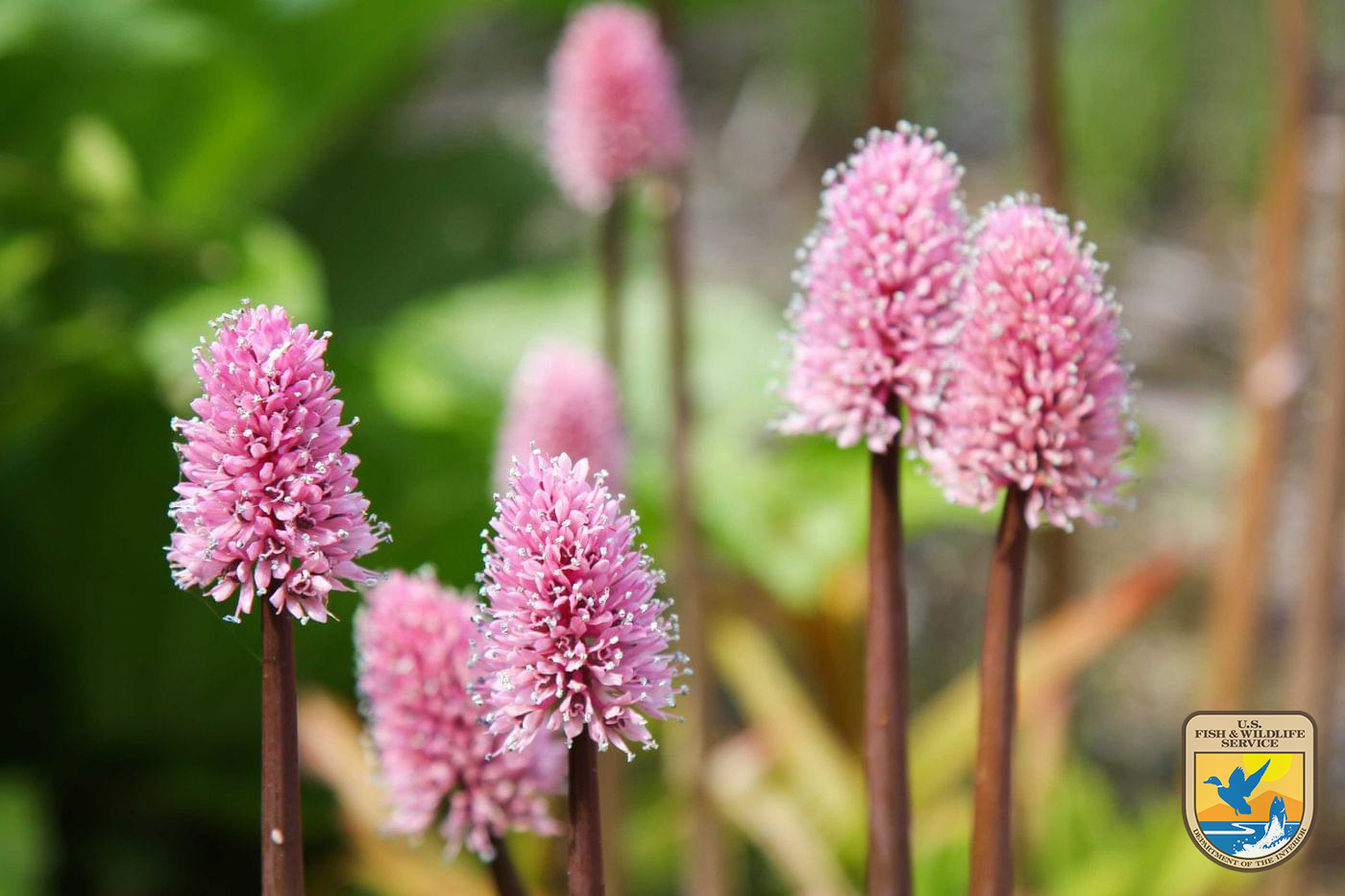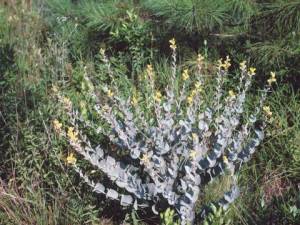
A partnership led by the state Department of Natural Resources has been awarded nearly $780,000 to sample, grow and save 14 imperiled plant species. The federal grant will also boost capacity to preserve the plants at the State Botanical Garden of Georgia, Atlanta Botanical Garden and the Chattahoochee Nature Center, while spreading that expertise and support to others in the nationally recognized Georgia Plant Conservation Alliance.
DNR senior botanist Lisa Kruse calls the impact “expansive.” And that’s not only for the targeted plants, which vary from swamp pink to hairy rattleweed and are all federally listed as endangered or threatened.
“The grant is going to fortify (the Georgia alliance’s) main partners and build the diversity and number of botanical gardens that can help preserve rare plants,” said Kruse, referring to the network of 50-plus universities, agencies, nonprofits and companies that have combined their clout to conserve plants.
Plants often play second fiddle to efforts to recover rare animal species. But Georgia’s five-year project landed the U.S. Fish and Wildlife Service Recovery Challenge grant on the strength of its plan to safeguard the 14 plant species and add Georgia Plant Conservation Alliance members who can do the work.
Jenny Cruse-Sanders, director of the State Botanical Garden of Georgia, said conservation horticulture is the cornerstone of the alliance, which is coordinated at the Athens garden, a part of the University of Georgia.
“It takes careful observation of natural habitats, experimentation and horticultural expertise to safeguard imperiled plants,” Cruse-Sanders said. “Georgia is a leader in identifying critical habitat, imperiled species and the conservation action needed to preserve our precious natural heritage in the southeastern U.S., one of the most botanically diverse areas of our country.”
Safeguarding refers to a complex practice that varies from protecting a species’ genetic stock to propagating the plants in a nursery and planting them back in the wild. Combined with protecting and restoring habitats, safeguarding is crucial to saving populations of at-risk plants.
The roles for Atlanta Botanical Garden, based in Midtown, include providing seed-banking expertise and facilities, leading collections for six of the target species, and managing a statewide safeguarding database.
President and CEO Mary Pat Matheson said safeguarding imperiled plant species is at the heart of the Atlanta garden’s mission. “And support for that strengthens the coordinated efforts of our Southeastern Center for Conservation,” Matheson added. “Those efforts, in turn, go a long way toward educating the public about threatened species and the importance of connecting people with plants.”
Work supported by the grant has already begun. Chattahoochee Nature Center, co-coordinator for the project in northwest Georgia, has collected tissue samples from Morefield’s leatherflower and Alabama leatherflower. In Georgia, the species are known from only one site each. Sampled plants have been tagged. Root cuttings may be next. There are also plans to collect seeds to bank at Atlanta Botanical Garden and grow at the nature center.
“Chattahoochee Nature Center has been working to preserve endangered Georgia plant species for over three decades, thanks in part to the passion of our senior director of operations, Henning von Schmeling,” said DeAnn Fordham, senior director of development and marketing at the Roswell center. “We are honored to be a part of this incredible endeavor and partner with leaders in plant conservation from across the state.”
The focus on the grant’s 14 species is important, yet the need to conserve plants is great. Georgia has 443 plant taxa—or group of related plants—rated critically imperiled in the state; 83 of those are imperiled globally.
Though often overlooked, plants purify air and water, provide raw materials and stunning beauty, shape cultures and economies, prevent erosion and play vital roles in our heritage. Kruse noted, too, that conserving plants involves restoring natural habitats, which improves the outlook for animals “up and down the food chain.”
Grant at a Glance
- U.S. Fish and Wildlife Service Recovery Challenge grant: $779,734 (plus $284,814 non-federal match)
- Focus: Enhance the Georgia Plant Conservation Alliance’s capacity to safeguard 14 imperiled plant species.
- Partners: Georgia DNR Wildlife Resources Division, State Botanical Garden of Georgia, Atlanta Botanical Garden, Chattahoochee Nature Center
- Plants: Alabama leatherflower (Clematis socialis); black-spored quillwort (Isoetes melanospora); Canby’s dropwort (Oxypolis canbyi); Coosa (or Mohr’s) Barbara’s buttons (Marshallia mohrii); dwarf sumac (Rhus michauxii); fringed campion (Silene polypetala); hairy rattleweed (Baptisia arachnifera); mat-forming quillwort (Isoetes tegetiformans); Morefield’s leatherflower (Clematis morefieldii); pondberry (Lindera melissifolia); smooth purple coneflower (Echinacea laevigata); swamp pink (Helonias bullata); Tennessee yellow-eyed grass (Xyris tennesseensis); Virginia spiraea (Spirea virginiana)
- The 14 targeted species are listed as endangered or threatened under the Endangered Species Act; 11 are globally ranked imperiled to critically imperiled.
Hairy Rattleweed: How It Works
Using hairy rattleweed as an example, here is how the grant-funded project will work.
Hairy rattleweed is pine flatwoods perennial that sports cobweb-like hairs and seed pods that rustle when dry; thus, the name. The species is federally listed as endangered and found worldwide only in southeast Georgia’s Wayne and Brantley counties. Also not good: Too few of the plant’s 15 known populations are protected.
To guarantee hairy rattleweed survives, DNR ecologist Jacob Thompson and the State Botanical Garden of Georgia will collect seeds and leaf tissue from each population to capture the genetic details. The process involves strict protocols to ensure plant populations are not harmed.
Work with the material collected will take two paths.
- The State Botanical Garden will grow plants from the seed. The homegrown plants and seeds will be shared with other Georgia Plant Conservation Alliance gardens. Over the five-year grant, the hope is to have all 15 populations represented at multiple gardens, some of which may be new alliance members.
- Atlanta Botanical Garden will use the leaf tissue to analyze the DNA and document each population’s genetic diversity—which can help determine hairy rattleweed’s available resources for adapting. The plan is to collect and analyze three populations a year, covering all 15 over the grant period.
Then Thompson and partners will take some of the plants grown in-house and plant them in appropriate habitat on protected lands. As part of the grant, partners are aiming to start two populations in the wild.
DNR senior botanist Lisa Kruse considers this the crowning goal: “to not only have populations protected at the gardens, but to bring the plant back in the wild and have it thrive.”
“Hairy rattleweed is a really unique part of Georgia’s heritage, and it represents a very unique ecosystem,” Kruse added. “This project will help us ensure that it stays in Georgia’s landscape.”


Bulloch Public Safety
11/24/2025 Booking Report for Bulloch County

Bulloch Public Safety
12/12/2025 Booking Report for Bulloch County

Bulloch Public Safety
12/01/2025 Booking Report for Bulloch County

Bulloch Public Safety
12/16/2025 Booking Report for Bulloch County

Bulloch Public Safety
12/15/2025 Booking Report for Bulloch County










